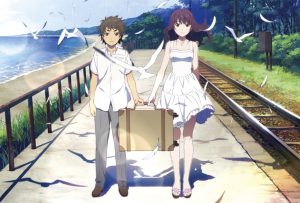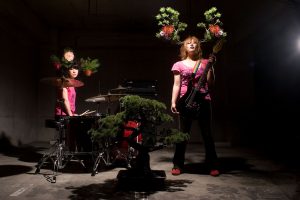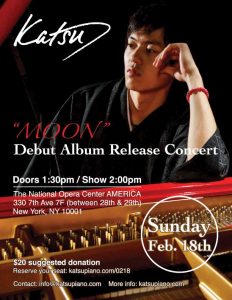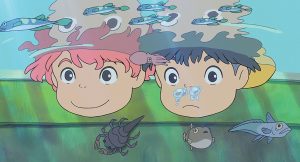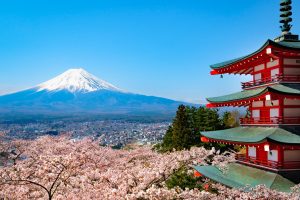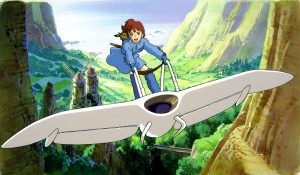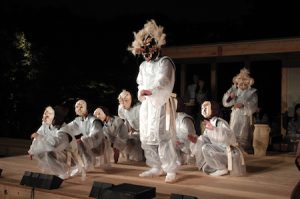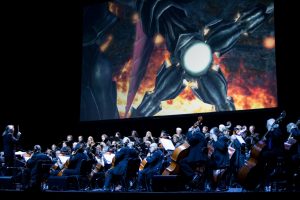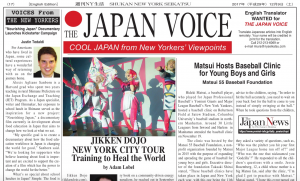JQ Magazine: Film Review — JAPAN CUTS 2018 at Japan Society

An “oh-my-god-it’s-too-accurate portrayal of first love” starring Aira Sunohara, Amiko makes its U.S. premiere at Japan Society July 16. (Amiko © Yoko Yamanaka)
By Katharine Olla for JQ magazine. A Friend of JET, Katharine taught as an ALT in a public elementary school in Gunma Prefecture from 2015-16. She currently works at Japan Society in New York.
It’s summer in the city, and that means another year of JAPAN CUTS, North America’s largest festival of contemporary Japanese cinema. From July 19-29, Japan Society will screen 30 films ranging from dramas and comedies to documentaries, anime, and experimental works. The festival will also feature special guest appearances by directors, documentary filmmakers, and actors, including the legendary actress Kirin Kiki, who will receive the CUT ABOVE Award for Outstanding Performance in Film.
It was difficult to choose just three to review, so I decided to watch films with strong female leads (because that’s one of the categories that Netflix tells me I like).
What if I just ran away and lived in the woods? is a question some of us ask after a morning commute on New York public transit. Get your fix by immersing yourself in the surreal, visually-striking world of Kushina, What Will You Be.
Anthropologist Soko (Yayoi Inamoto) and her assistant Keita (Suguru Onuma) trek through the forest to locate and study an elusive group said to be in the mountains. What they find is a women-only colony led by matriarch Onikuma (Miyuki Ono). Onikuma’s family consists of her daughter Kagu (Tomona Hirota) and granddaughter Kushina (Ikumi Satake), whose secret pastime is listening to her cassette player. After the outside world intrudes, how will this closed community react? And what is Kushina listening to on her Walkman?
This is Moët Hayami’s debut feature film, and it’s a labor of love: as its writer, director, art director, costume designer, and editor, with this level of care she’s managed to curate every detail of this film to create a truly singular world within a world. It’s hard to shake off after the credits roll.
Featuring an intro and Q&A with writer/director Moët Hayami and actress Tomona Hirota, Kushina, What Will You Be screens Wednesday, July 25 at 6:30 p.m. (international premiere).
WIT Life #327: New York Asian Film Festival
Written by professional Writer/Interpreter/Translator Stacy Smith (Kumamoto-ken CIR, 2000-03), WIT Life is a periodic series about aspects of Japanese culture such as film, food and language. Stacy starts her day by watching Fujisankei’s newscast in Japanese, and here she shares some interesting tidbits and trends along with her own observations.
In addition to being in the middle of a major heat wave, we are in the midst of film festival season here in the city. Specifically I’m talking about the current New York Asian Film Festival (NYAFF), which is in its 17th year! This year I have the honor of interpreting for several actors and directors during the festival, and so far I’ve worked on the films Dynamite Graffiti and The Hungry Lion. For the former, both director Masanori Tominaga and star Tasuku Emoto were on hand, and you can access a Facebook recording of their Q&A here. For the latter, director Takaomi Ogata attended the screening and his Q&A can be found here.
This year’s recipient of the festival’s Star Asia Lifetime Achievement Award was Masato Hara, who Read More
JQ Magazine: Nippon in New York — Hatsune Miku, JAPAN CUTS, Sailor Moon
By JQ magazine editor Justin Tedaldi (CIR Kobe-shi, 2001-02). Justin has written about Japanese arts and entertainment for JETAA since 2005. For more of his articles, click here.
Before and after the outdoor fireworks, enjoy some summer events in the cool indoors, whether it’s catching one of the dozens of films premiering at Japan Society’s annual festival, or enjoying anything from interpretative theater to the latest pop sensation.
This month’s highlights include:
Now through July 15
New York Asian Film Festival 2018
SVA Theatre, 333 West 23rd Street
Walter Reade Theater, 165 West 65th Street
$15, $12 seniors and students, $10 Subway Cinema members
From vicious, life-destroying phone scams to balletic battles between equally corrupt cops and yakuza, NYAFF offers films that reflect on contemporary society while offering extreme genre pleasures. There are self-referential takes on cinematic zombies, existential date nights, and teens finding their own corners of the world despite familial and societal expectations. showcasing the most exciting comedies, dramas, thrillers, romances, horrors and arthouse films from East Asia. Features the North American premieres of Japanese films Blood of Wolves (July 2), River’s Edge (July 3), Liverleaf (July 8), Midnight Bus (July 11), One Cut of the Dead (July 13), and Inuyashiki (July 15).
July 3, 5, 7
E-Walk 42nd Street 13, 247 West 42nd Street
Empire 25, 234 West 42nd Street
$12.50
Producer Genki Kawamura follows up his mega-hit Your Name with another anime tale of star-crossed teenage lovers with a sci-fi fantasy twist. Shy Norimichi and fast-talking Yusuke are goo-goo-eyed over the same elusive classmate, Nazuna. But Nazuna, unhappy over her mother’s decision to remarry and leave their countryside town, plans to run away and has secretly chosen Norimichi to accompany her. When things don’t go as planned, Norimichi discovers that a glowing multi-color ball found in the sea has the power to reset the clock and give them a second chance to be together. But each reset adds new complications and takes them farther and farther away from the real world—until they risk losing sight of reality altogether.
Premieres Friday, July 6
Francesca Beale Theater, 144 West 65th Street
$15, $12 seniors and students
From his start pioneering synth pop music with Yellow Magic Orchestra, in the late ’70s to winning an Oscar for his score for The Last Emperor in 1988, Ryuichi Sakamoto quickly established himself as one of the most original and intuitive composers of his generation. But, never content to rest on his laurels, Sakamoto’s life journey eventually led him to find musical inspiration in the unlikeliest of places: the Fukushima nuclear disaster and a personal battle with cancer, both of which gave way to a late-life shift in his artistic process. With Coda, director Stephen Nomura Schible (a co-producer on Lost in Translation) crafts a portrait of the artist as an ageless man, one who can turn the worst news into the most refined and purposeful moment of productivity in an already storied career. Shot over five years, this graceful music documentary is an elegantly observed examination of the creative process, following as Sakamoto builds from nothing the album he must assume will be his swan song. Sakamoto and Schible will appear in person for the 7:00 p.m. (Q&A) and 9:30 p.m. (intro) screenings on July 6 and the 4:45 p.m. (Q&A) and 7:30 p.m. (intro) screenings on July 7. Q&As moderated by Sasha Frere-Jones.
WIT Life #326: New York Japan CineFest 2018
Written by professional Writer/Interpreter/Translator Stacy Smith (Kumamoto-ken CIR, 2000-03), WIT Life is a periodic series about aspects of Japanese culture such as film, food and language. Stacy starts her day by watching Fujisankei’s newscast in Japanese, and here she shares some interesting tidbits and trends along with her own observations.
Last night I caught day 1 of the New York Japan CineFest held at Asia Society. 2018 marks the seventh anniversary of the event, and it seems to get better every year. The lineup featured six short films that ranged in length from eight to 28 minutes, and included two documentaries.
My favorite was the final film And So We Put Goldfish in the Pool from Makoto Nagahisa, which clo cked in at the longest 28 minutes but went by in a flash. It is based on a true story of four 15-year old girls from a small town in Saitama who released 400 goldfish into their high school pool in order to escape the boredom of their daily lives. Its zany tone and fast-paced story kept the audience captivated and laughing. Despite its humorous tone, it poignantly addresses the universal feelings experienced during high school and certainly brought back memories of that time in my life. Last year it received the Short Film Grand Jury Prize at Sundance (you can watch the film via this link), and it was Nagahisa’s directorial debut.
cked in at the longest 28 minutes but went by in a flash. It is based on a true story of four 15-year old girls from a small town in Saitama who released 400 goldfish into their high school pool in order to escape the boredom of their daily lives. Its zany tone and fast-paced story kept the audience captivated and laughing. Despite its humorous tone, it poignantly addresses the universal feelings experienced during high school and certainly brought back memories of that time in my life. Last year it received the Short Film Grand Jury Prize at Sundance (you can watch the film via this link), and it was Nagahisa’s directorial debut.
Another highlight of the program was Sugihara Survivors, which told the story Read More
JQ Magazine: Nippon in New York — The Joy of Sake, BoroughCon, Kyary Pamyu Pamyu
By JQ magazine editor Justin Tedaldi (CIR Kobe-shi, 2001-02). Justin has written about Japanese arts and entertainment for JETAA since 2005. For more of his articles, click here.
After an unusually chilly spring, it’s finally starting to feel like summer. Enjoy some seasonal events this month that celebrate the best of both fine art and pop art.
This month’s highlights include:
June 6-7, 6:30 p.m.
Asia Society, 725 Park Avenue
$12, $10 seniors/students, $8 members
Highlighting some of the most exciting new voices in cinema, New York Japan CineFest is an annual event that features works by emerging Japanese and Japanese American filmmakers. This two-day program of short films includes Sugihara Survivors, a short documentary film about Chiune Sugihara (considered Japan’s Oskar Schindler); Hatis Noit, a glimpse into the music of the titular musician whose experimental vocals recollect memories of snowy Hokkaido; and Dolphin Dreams, a groundbreaking experimental documentary that builds on the communicative power of dance to give audiences an unprecedented visceral experience. The first night’s program is followed by a reception.
Thursday, June 7, 7:30 p.m.
Japan Society, 333 East 47th Street
$38, $30 Japan Society members
Celebrated jazz pianist Makoto Ozone, hailed by the New York Times as “thrilling, virtuosic and unabashedly personal,” performs selections from his wide-ranging repertoire, from Gershwin and Bernstein to Piazzolla and Ravel. Known for his large concert hall performances with prestigious philharmonic orchestras and jazz legends such as Gary Burton and Chick Corea, Ozone offers an upbeat, freewheeling and fearless solo in our auditorium.
Friday, June 8, 7:30 p.m.
Super Chon Bros Tour 2 (featuring Tricot)
PlayStation Theater, 1515 Broadway
$20
Prog rockers Chon and Polyphia have announced a second installment of their Super Chon Bros tour, set to take off this spring with help from TTNG and Kyoto-based Tricot. Rolling Stone calls the latter quartet “adrenalized math rock sped up and given pop’s candy coating.” Their meticulously painted set—complete with shadows and amps brushed into the background—picks up on the Kyoto band’s brilliantly colored math-rock, its hooks popping into view like neon splashes against a canvas.
JQ Magazine: Film Review — ‘Isle of Dogs’
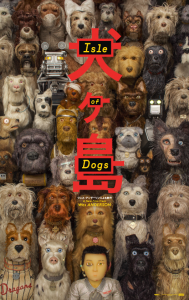
“Isle of Dogs is a fun film and a stylistic ode to legendary Japanese director Akira Kurosawa about a boy and man’s best friend that’s full of beautiful visuals and is equally enjoyable for both kids and adults.” (Fox Searchlight)
By Andy Shartzer (Shizuoka-ken, 2014-16) for JQ magazine. Andy graduated from the University of Virginia with a degree in chemical engineering, and currently works for JETRO New York. He is also the Community Development Chair for JETAA New York.
Isle of Dogs is director Wes Anderson’s first animated film since 2009’s Fantastic Mr. Fox. While it has received mostly positive reviews (with some reservations), it’s still interesting to see Anderson hone his storytelling skills using a colorful and vibrant world created with stop motion animation. The story opens with a prologue titled “Before the Age of Obedience” that supposedly explains how cats became more prominent in Japan. Fast forwarding to “Japan 20 Years in the Future,” the movie cuts to fictional Megasaki City, its residents, and Mayor Kobayashi (Kunichi Nomura), an authoritarian who declares that all dogs must be banished to nearby Trash Island because of the outbreak of dog flu and snout fever. The first dog that arrives on Trash Island is Spots (Liev Schreiber), the personal guard dog of Atari Kobayashi (Koyu Rankin), the ward and orphaned nephew of the mayor.
Atari soon takes matters into his own hands and flies a propeller plane to Trash Island to find Spots. He unfortunately crash lands on the island (in the meantime getting a piece of the plane stuck in his head, ouch) but is rescued by a pack of five dogs: Chief (Bryan Cranston), Boss (Bill Murray), Rex (Edward Norton), Duke (Jeff Goldblum), and King (Bob Balaban). The dogs—except for Chief, who was a former stray—agree to help Atari find Spots and accompany him on his journey to another part of Trash Island.
Though reluctant at first, Chief decides to join Atari and the other dogs after getting some extra persuasion from Nutmeg (Scarlett Johansson), a female purebred dog. Back in Megasaki City, Mayor Kobayashi orders the extermination of all dogs on Trash Island. Tracy Walker (Greta Gerwig), an American exchange student, gets involved and investigates further.
A couple fun Easter eggs in the film include: Ken Watanabe (The Last Samurai, Inception) as a head surgeon, Yojiro Noda (lead singer of RADWIMPS) as a news anchor, and Yoko Ono (artist, singer, peace activist) as a medical assistant named…Yoko Ono.
WIT Life #324: Inland Sea
Written by professional Writer/Interpreter/Translator Stacy Smith (Kumamoto-ken CIR, 2000-03), WIT Life is a periodic series about aspects of Japanese culture such as film, food and language. Stacy starts her day by watching Fujisankei’s newscast in Japanese, and here she shares some interesting tidbits and trends along with her own observations.
This weekend I caught Kazuhiro Soda’s Inland Sea (港町) at the Film Society of Lincoln Center’s Art of the Real. The festival’s opening film about John McEnroe whet my appetite for more documentaries, and I was looking forward to seeing the latest from Soda after enjoying his film Campaign at Japan Society several years back. Inland Sea is set near the hometown of his wife Kiyoko Kashiwagi, who is also the film’s producer. They were both on hand to introduce the film and take part in a post- screening Q&A. In his introduction Soda shared that the film adheres to their Ten Commandments, which include tenets such as no research before shooting, not setting any themes or goals before editing, and paying for the production on their own (to the dismay of producer Kashiwagi).
Inland Sea takes place in the port city of Ushimado in Okayama Prefecture, population 7000. Many of the younger residents have already left, and the documentary’s main subjects are the octagenarians Wai-chan and  Kumiko, respectively a fisherman and the town crier. They are both captivating subjects, but as a cat lover I was most entranced by the stray felines who congregate at the home of transplants to the area who have been feeding them. I was engaged throughout the film’s two hour plus duration, but it definitely could have been cut in places, especially the long takes on the fishing boat.
Kumiko, respectively a fisherman and the town crier. They are both captivating subjects, but as a cat lover I was most entranced by the stray felines who congregate at the home of transplants to the area who have been feeding them. I was engaged throughout the film’s two hour plus duration, but it definitely could have been cut in places, especially the long takes on the fishing boat.
During the Q&A Soda explained that the reason he chose to make a black and white film (except for the last color scene) was that he wanted to portray Read More
JQ Magazine: Nippon in New York — Japan Day @ Central Park, Miyavi, In Praise of Natto
By JQ magazine editor Justin Tedaldi (CIR Kobe–shi, 2001-02). Justin has written about Japanese arts and entertainment for JETAA since 2005. For more of his articles, click here.
As spring continues and the weather continues to warm, New Yorkers can enjoy activities all over the city both indoors and out.
This month’s highlights include:
Sunday, May 6, 11:00 a.m.
Children’s Day Festival: Kodomo no Hi
Japan Society, 333 East 47th Street
$18, $10 Japan Society members, children ages 2 and under free
Hang the koinobori (carp streamers) and don your kabuto (samurai helmet): Children’s Day is on its way! Come join us for Japan’s national holiday where all children are stars and their happiness is celebrated. Enjoy a performance of Peach Boy (Momotaro) featuring storytelling, music, dance, taiko drumming and lots of audience participation. Continue the adventure with other authentic Kodomo no Hi activities!
Sunday, May 6, 8:00 p.m.
Sony Hall, 235 West 46th Street
$34.50, $74.50 VIP
Keiko Matsui’s music speaks to the hearts and souls of fans around the world, transcending borders and building bridges among people who share a common appreciation of honest artistry and cultural exchange. Journey to the Heart, her 27th recording as a leader, marks the 30th anniversary since her recording debut and is her boldest statement yet. On Journey to the Heart, Matsui more than delivers what she has come to be loved for breathtakingly beautiful transcendent melodies that transport the listener. A master storyteller, she crafts passionate and emotive songs with lush harmonies and global rhythms to create timeless musical anthems.
Tuesday, May 8, 6:30 p.m.
Cool Tokyo: Harajuku, Akihabara and Beyond
Japan Society, 333 East 47th Street
$14, $11 Japan Society members, seniors and students
From street fashion to street food, kawaii to cosplay, Tokyo is the epicenter of Japan’s latest trends. With so much to explore in this vibrant, fast-paced city, it can be hard to know where to start. At this talk, Sebastian Masuda, visual artist and founder of Harajuku shop 6%DokiDoki, and Abby Denson, comic book artist and author of Cool Tokyo Guide: Adventures in the City of Kawaii Fashion, Train Sushi and Godzilla, help to navigate Tokyo’s vending machines, subway etiquette, hidden treasures, and much more. Followed by a book signing reception.
JQ Magazine: Film Review — ‘Mary and the Witch’s Flower’
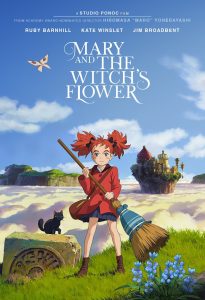
“Director Hiromasa Yonebayashi delivers a film packed with many of the attributes that characterizes Studio Ghibli at its best.” (Universal Pictures Home Entertainment)
By Lyle Sylvander (Yokohama–shi, 2001-02) for JQ magazine. Lyle has completed a master’s program at the School of International and Public Affairs at Columbia University and has been writing for the JET Alumni Association of New York since 2004. He is also the goalkeeper for FC Japan, a New York City–based soccer team.
Mary and the Witch’s Flower, the debut feature film from Studio Ponoc, an anime outfit founded by Studio Ghibli veterans Hiromasa Yonebayashi and Yoshiaki Nishimura after Ghibli closed its doors in 2015, starts in medias res, with a violent firestorm engulfing the screen. A small girl with bright red hair escapes the maelstrom by flying away on a broomstick, pursued by dolphin-squid-fighter-jet hybrids. She plunges down through the clouds and crashes into a field, where her stolen cargo of glowing blue flowers scatters, instantly transforming the landscape as trees burst out of the earth to towering heights in the blink of an eye. Who she is, where she is, and why she needs to escape isn’t revealed until the final act.
Director Yonebayashi delivers a film packed with many of the attributes that characterizes Studio Ghibli at its best. In this story (based on The Little Broomstick, a 1971 children’s novel by popular British author Mary Stewart, a young female protagonist journeys through a fantastical world, battling witches on a magical quest. As in the best films of Hayao Miyazaki, the hand-drawn animation (a novelty in the CGI-dominated marketplace) depicts a European fairy tale setting while retaining a unique Japanese otherworldliness. This family-friendly film recalls such Miyazaki masterworks as Howl’s Moving Castle, Spirited Away and Kiki’s Delivery Service. Unlike those films, however, Mary and the Witch’s Flower falls short of being a masterpiece.
The animators invoke worlds upon worlds here: the green woods and mist-filled forests of England rendered in swooning evocative watercolors, and the show-stopping Endor, a psychedelic space from out of a dream or drug trip, packed with strange objects, unexplainable phenomena, students floating by in soap bubbles, fountains morphing into human form, grotesque creatures loping out of the shrubbery, only to disappear just as quickly. Endor is dazzling in an off-putting way (similar to some of the “worlds” presented in Ari Folman’s The Congress, where animated avatars engulf their originals). The action sequences are intricate and thrilling.
JQ Magazine: Nippon in New York — Sake + Rakugo, Ryuichi Sakamoto, Sakura Matsuri
By JQ magazine editor Justin Tedaldi (CIR Kobe–shi, 2001-02). Justin has written about Japanese arts and entertainment for JETAA since 2005. For more of his articles, click here.
Spring has sprung in the Big Apple, and that means one thing: a new season of sounds, colors, and spectacular performing arts to match the blossoming sakura trees throughout the city.
This month’s highlights include:
Thursday, April 5, 6:30 p.m. and 8:00 p.m.
Rakugo Event: Tozaburo Yanagiya III
Brooklyn Kura, 68 34th Street (Industry City)
Free
This special set of performances is held at the first Japanese sake brewery in New York State. Born in Tokyo, Yanagiya Tozaburo became a disciple of master Rakugo performer Yanagiya Gontaro III in 1999. He was promoted to the master Shin’uchi rank, in which he himself is certified to train disciples, in 2014. Ever since, he has performed all over Japan and appeared in the ShotenRakugo show and other television programs. During his first visit to North America this spring, he has performed at the University of Toronto, LaGuardia Community College, Hunter College, New York University, and Brooklyn Kitchen. Tozaburo was awarded the Agency for Cultural Affairs’ Arts Festival Newcomer Award in 2016. Tozaburo will share sake-inspired stories (while patrons can enjoy the real thing on the premises) along with a traditional story, “The Zoo.”
Tozaburo is also appearing at J-COLLABO’s Spring Festival in Park Slope on Saturday, April 7, at 3:00 p.m. For more information, click here.
April 12-28
Kazuo Miyagawa: Japan’s Greatest Cinematographer
The Museum of Modern Art, (April 12-29)
Japan Society, (April 13-28)
$13/$10 seniors and students, $9 Japan Society members
In celebration of the 110th anniversary of his birth, Japan Society presents an 11-film retrospective surveying the work of Kazuo Miyagawa (1908-1999), the most influential cinematographer of postwar Japanese cinema. Working intimately with directors like Yasujiro Ozu, Akira Kurosawa, Kenji Mizoguchi and Kon Ichikawa on some of their most important films, Miyagawa pushed Japanese cinema to its highest artistic peaks through his lyrical, innovative and technically flawless camerawork. This career-spanning selection displays his great versatility, including major masterpieces and rarely shown titles, screening in 35mm and new digital restorations. Co-organizer The Museum of Modern Art will host repeat screenings and additional Miyagawa retrospective titles from April 12-29. Preceding the retrospective, new 4K restorations of Mizoguchi’s A Story From Chikamatsu and Sansho the Bailiff, both shot by Miyagawa, will run at Film Forum from April 6-12.
April 22-23, 25
E-Walk 42nd Street 13, 247 West 42nd Street / Empire 25, 234 West 42nd Street
$12.50 all ages
Part of Studio Ghibli Fest 2018! From the legendary Studio Ghibli, creators of My Neighbor Totoro and the Academy Award-winning Spirited Away, comes a charming and magical adventure that will delight the entire family. Haru is walking home after a dreary day of school when she spies a cat with a small gift box in its mouth crossing a busy street, and she jumps in front of traffic to save the cat from an oncoming truck. To her amazement, the cat gets up on its hind legs, brushes itself off, and thanks her very politely. But things take an even stranger turn when later than night, the King of Cats shows up at her doorstep in a feline motorcade. He showers Haru with gifts, and decrees that she shall marry the Prince and come live in the Kingdom of Cats!
April 25-27
Cinépolis Chelsea (4/25-26), 260 West 23rd Street
Regal Cinemas Battery Park Stadium (4/27), 102 North End Avenue
$23
From his start pioneering synth pop music with Yellow Magic Orchestra, in the late ’70s to winning an Oscar for his score for The Last Emperor in 1988, Ryuichi Sakamoto quickly established himself as one of the most original and intuitive composers of his generation. But, never content to rest on his laurels, Sakamoto’s life journey eventually led him to find musical inspiration in the unlikeliest of places: the Fukushima nuclear disaster and a personal battle with cancer, both of which gave way to a late-life shift in his artistic process. With Coda, director Stephen Nomura Schible (a co-producer on Lost in Translation) crafts a portrait of the artist as an ageless man, one who can turn the worst news into the most refined and purposeful moment of productivity in an already storied career. Shot over five years, this graceful music documentary is an elegantly observed examination of the creative process, following as Sakamoto builds from nothing the album he must assume will be his swan song. Premiere Screening features a Q&A with subject Sakamoto and Nomura Schible.
April 28-29, 10:00 a.m.-6:00 p.m.
Brooklyn Botanic Garden, 990 Washington Avenue
$30 adults, $25 senior and students, free for BBG members and children under 12
Billed as a dynamic two days of traditional and contemporary Japanese culture inspired by BBG’s famous collection of flowering cherry trees, organizers will once again welcome tens of thousands of visitors to its massive 52 acres, home to over 12,000 kinds of plants (and, for that weekend, nearly as many cosplayers). Enjoy food and drink, events and activities for all ages while taking in live performances from New York troupe Dancejapan with Sachiyo Ito, the BBG Parasol Society Fashion Show, NYC’s own J-pop meets jazz favorite J-MUSIC Ensemble, and the Matsuri live debuts of DJ Sashimi and Tokyo-based rock duo Bo-Peep.
Want to stay in the loop on future events? Follow Justin on Facebook and Twitter.
JQ Magazine: Nippon in New York – Hello from Japan, Katsu Album Release, ‘Ponyo’ Turns 10
By JQ magazine editor Justin Tedaldi (CIR Kobe–shi, 2001-02). Justin has written about Japanese arts and entertainment for JETAA since 2005. For more of his articles, click here.
Stay warm this winter with some hot local events, from live showcases that will transport you to another time and place, some new anime screenings, and a sake extravaganza you won’t want to miss.
Now through May 6
Children’s Museum of Manhattan, 212 West 83rd Street
$14 children/adults, $11 seniors
Experience Tokyo’s vibrant culture in a new interactive exhibit! Children will have fun learning about life in present day Japan in this playful, highly immersive environment that transports families to two distinct areas of Tokyo that exist side by side: one serene and exquisite, the other, too cute for words. Kawaii Central is a streetscape inspired by Tokyo’s bustling Harajuku district, bursting with color, trendy shops and cuter than cute styles. Kids sing karaoke, smile for the photo booth camera, serve up a seasonal Japanese meal, and design adorable mascots for their families. Plus, learn more about contemporary Japan through special programs for the public, free with admission.
Saturday, Feb. 3, 3:30 p.m.
Private Japanese Tea Ceremony Demonstration @ The Secret Kyoto Garden
Urasenke Chanoyu Center of New York, 153 East 69th Street
$35 advance, $39 day of event
Experience one of Japan’s oldest traditional tea ceremonies in a secret indoor Japanese garden hidden in the Upper East Side—led by a Tea Master of Urasenke! Join New York Adventure Club for a traditional Japanese tea ceremony demonstration in the style of Urasenke, one of the main schools of Japanese tea ceremony. Established in 1967 to promote the rich cultural tea tradition of Urasenke in New York City, the UCC is a private organization that teaches its members how to master this ancient tradition over the course of 10-15 years. This event also offers an opportunity to consume the best quality sweets and matcha green tea from Kyoto, the birthplace of Urasenke.
Katsu: Debut Album Release Concert
National Opera Center – OPERA America, 330 Seventh Avenue
$20 suggested donation
Katsu started to perform in public about a month after he started playing the piano when he was the age of 19 by self-learning. He also started composing originals soon after the beginning of the public performances. After performing several times in Japan, He moved to New York. Then in December 2016, he debuted as a composer and a pianist at the Steinway Hall. Now, he has been performing his original tunes as a solo pianist at multiple venues. His music is described as New Age music, classical, Jazz, romantic piano, and more. This intimate performance will feature selections from his recently released debut album, Moon.
March 25-26, 28
E-Walk 42nd Street 13, 247 West 42nd Street / Empire 25, 234 West 42nd Street
$12.50 all ages
For the kickoff of Studio Ghibli Fest 2018, From the legendary Studio Ghibli, creators of Spirited Away and My Neighbor Totoro, and Academy Award-winning director Hayao Miyazaki, comes a heartwarming family adventure. When Sosuke, a young boy who lives on a clifftop overlooking the sea, rescues a stranded goldfish named Ponyo, he discovers more than he bargained for. Ponyo is a curious, energetic young creature who yearns to be human, but even as she causes chaos around the house, her father, a powerful sorcerer, schemes to return Ponyo to the sea. Miyazaki’s breathtaking, imaginative world is brought to life with an all-star cast, featuring (on the March 25 and March 28 English-language screenings) the voices of Cate Blanchett, Matt Damon, Lily Tomlin, Liam Neeson, and more.
Monday, March 26, 7:30 p.m.
Japan Society, 333 East 47th Street
$15, $10 Japan Society members, seniors and students
This program is the 13th installment of Japan Society’s annual Play Reading Series, which introduces topical plays from up-and-coming playwrights in Japan to artists and audiences in the U.S. Written by Hideto Iwai, the winner of the prestigious Kishida Kunio Award for Drama, Manhood follows the twisted turns in the lives of four men as their boyish posse faces the harsh realities of adulthood and old age. Sarah Hughes, a New York local and emerging theater director, leads her gender swapped cast in this off-kilter depiction of Japanese “bro culture.” Playwright Iwai joins in a post-performance Q&A with the audience and director.
Friday, March 30, 6:30 p.m.
The Nippon Club, 145 West 57th Street
$10 (materials included), RSVP at jpcourse@jfny.org
Are you planning a trip to Japan in the near future? If so, this workshop is for you! Please join us for our Travel Japanese workshop and learn Japanese vocabulary and basic expressions essential for travel in Japan! Japanese customs and useful travel information will also be introduced. In this workshop, you will be able to order food at a restaurant using simple terms, communicate with a store attendant while doing shopping, tell your destination to a taxi driver or station agent and ask for information, and more!
Want to stay in the loop on future events? Follow Justin on Facebook and Twitter.
JQ Magazine: Nippon in New York — Studio Ghibli, ‘Final Fantasy’ @ 30, ‘Mary and the Witch’s Flower’
By JQ magazine editor Justin Tedaldi (CIR Kobe–shi, 2001-02). Justin has written about Japanese arts and entertainment for JETAA since 2005. For more of his articles, click here.
Start 2018 off right by heading down to your local concert hall, cinema, or arts center for some fantastic new year’s fare. Whether you enjoy movies, travel, or orchestral performances classic video games, treat yourself and catch a break from the cold.
This month’s highlights include:
Jan. 1-11
IFC Center, 323 Sixth Avenue
$15 adults, $11 children
In collaboration with GKIDS, IFC Center is pleased to present the return of this smash-hit retrospective of Japan’s famed Studio Ghibli animation house. Don’t miss your chance to see some of the greatest films of all time on the big screen! Titles include the favorites Spirited Away, Nausicaä and My Neighbor Totoro—with select screenings on 35mm prints! All films shown prior to 6 p.m. will be screened in the English-language version; evening shows will be subtitled in English. For a list of all films and dates, click here.
Jan. 11-14
Japan Society, 333 East 47th Street
$35, $30 Japan Society members
Following a sold-out run of Medea in 2011, Satoshi Miyagi and his company SPAC return to New York with another literary masterpiece, Othello. Miyagi re-tells Shakespeare’s famed tragedy through noh theater’s most distinct storytelling structure, mugen noh, or a play that features a spirit. Told from the perspective of Othello’s wife Desdemona, who returns as a ghost after her death, Miyagi’s production is replete with stunning masks and costumes as well as powerful live music and chanting. Performed in Japanese with English titles. The Friday, Jan. 12 performance is followed by an artist Q&A.
Saturday, Jan. 13, 2:00 p.m. and 8:00 p.m.
Distant Worlds: Music from Final Fantasy
Carnegie Hall (Stern Auditorium/Perelman Stage), 881 Seventh Avenue
$28-$120
Distant Worlds brings its concert production to one of the world’s most famous orchestral venues. With composer Nobuo Uematsu in attendance, the Distant Worlds Philharmonic Orchestra and the Dessoff Choirs under the direction of Grammy Award-winner Arnie Roth celebrate the 30th anniversary of Final Fantasy. These special performances feature exclusive HD video presentations from Square Enix alongside classic scores and new premieres.
JQ Magazine: Film Review — ‘In This Corner of the World’
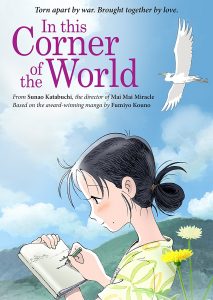
“In This Corner of the World is more than a good story with vibrant animation. It is a thoughtful work of art that holds its own against the other big anime hit of 2016, Your Name.” © Fumiyo Kouno/Futabasha/Konosekai no Katasumini Project
By Preston Hatfield (Yamanashi–ken, 2009-10) for JQ magazine. Preston is the English teacher you wish you had growing up. He taught in Kofu, Yamanashi on JET and later received his Master’s in Education and teaching credential from Stanford University. He now teaches English at a public high school in the Silicon Valley, and is inspiring the leaders of tomorrow one dank meme at a time.
Raise your hand if you remember how it felt to watch Grave of the Fireflies. It isn’t often that you’re truly glad to have watched a film that slowly rips your heart out, but the iconic 1988 film about Japan during World War II did exactly that for generations of viewers. Nearly 30 years later, director Sunao Katabuchi (Mai Mai Miracle) has created his own anime masterpiece that is every bit as poignant, tragic and beautiful as Grave of the Fireflies.
Based on the award-winning manga by Fumiyo Kouno, In This Corner of the World follows Suzu, an 18-year-old girl from Hiroshima, as she is plucked from her life by a man she only vaguely knows and moves in with his family in the nearby naval port city of Kure. As Suzu acclimates to life with her new family, the audience gets a look at the daily ins and outs of domestic life for Japanese women at the time, from tending the garden and collecting locally grown plants to make their meals, to refashioning kimonos into trousers and robes. Suzu also struggles with learning how to be a good wife and ingratiating herself to her new in-laws and her husband’s hypercritical sister.
In the latter half of the film, Katabuchi shows how the war progressively deteriorates the Japanese’s sense of normalcy, comfort, and security. What was once a quaint seaside naval town is reduced to a scene of waking nightmare and blazing fire. There are incessant air raid sirens and evacuations to bomb shelters, government propaganda, espionage hysteria, overcrowded hospitals, and the incomprehensible annihilation of cities and the people who populate them. But despite a number of somber (if not heart-wrenching) moments, In This Corner of the World ends the way most of us wish Grave of the Fireflies could have ended, and that small dose of optimism makes the film much easier to sit with when the credits roll.
Justin’s Japan: ‘Nourishing Japan’ Documentary Launches Kickstarter Campaign
By JQ magazine editor Justin Tedaldi (CIR Kobe-shi, 2001-02) for Shukan NY Seikatsu. Justin has written about Japanese arts and entertainment for JETAA since 2005. For more of his articles, click here.
For Americans who have lived in Japan, some cultural experiences have a wonderful way of returning with us on the journey home.
Alexis Agliano Sanborn is a Harvard grad who spent two years teaching in rural Shimane Prefecture on the Japan Exchange and Teaching (JET) Program. As a Japan specialist, writer and filmmaker, her exposure to school lunch in Shimane served as the inspiration for a new project: “Nourishing Japan,” a documentary film currently in development about food education in Japan that aims to change how we look at what we eat.
“My specific goal is to create a documentary about how the food education workforce in Japan is changing the world for good,” Sanborn said. “We’re looking for supporters who believe learning about food is important, and are excited to support the creation of a film which has the power to change the world for the better.”
What’s so special about school lunches in Japan? Simple: The food is made from scratch. A 2013 Washington Post article explains: “Schools in Japan give their students the sort of food they’d get at home—not at a stadium, as in the United States….They’re balanced but hearty, heavy on rice and vegetables, fish and soups, and they haven’t changed much in four decades.”
Next year, Sanborn will return to Japan to begin a second round of filming. On January 5th, the “Nourishing Japan” project will launch a Kickstarter crowdfunding campaign to help share the project with the world. With more than 160 likes currently on Facebook, the team is looking to double that number in December. For more information and to view the Kickstarter teaser video, visit http://nourishingjapan.com.
WIT Life #318: Shuji Terayama
Written by professional Writer/Interpreter/Translator Stacy Smith (Kumamoto-ken CIR, 2000-03), WIT Life is a periodic series about aspects of Japanese culture such as film, food and language. Stacy starts her day by watching Fujisankei’s newscast in Japanese, and here she shares some interesting tidbits and trends along with her own observations.
Last week I had the opportunity to see some amazing works from legendary avant garde Japanese poet, dramatist, writer, film director, and photographer Shuji Terayama. I hadn’t heard of him before, but many critics view him as one of the most productive and provocative creative artists to come out of Japan. He has also been cited as an influence on various Japanese filmmakers from the 1970s onward. The three films screened were Americans, who are you (アメリカ人あなたは), Laura (ローラ) and The Trial (審判).
A special treat was that Laura included the restaging of Terayama’s 1974 film performance with the original actor, Henrikku Morisaki, who was in attendance. This short film feature female strippers who are berating the audience, when all of a sudden a spectator (Morisaki) enters the film. We saw scenes of him as a young man in this role, being stripped and assaulted by the women. At the end of the film he emerged from behind the screen, this time naked and holding his torn clothes. In an interview post-screening, Morisaki told stories about his work with Terayama over the course of almost 17 years. He described Read More


